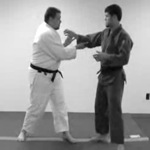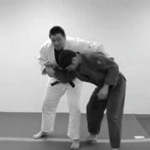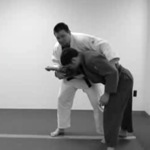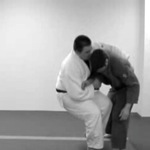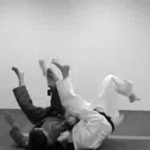An Interview with Daniel McCormick,
2008 US National Judo Championship Winner, 2009 Judo Olympian
Stephan’s note: This is the transcript of an audio interview I did with Daniel McCormick.
To hear this podcast episode in full, you have a couple of options. The first one is to just press play on the YouTube link – easy as 1,2,3! The second (and better!) option is subscribing to The Strenuous Life Podcast so that you don’t miss out on any future episodes. To do this, you just need to click on your chosen audio player that is compatible with your device – one click and you’re on your way!
- Apple Podcasts (the purple app on your iPhone)
- Google Podcasts (the new google podcast app)
- Spotify Podcasts (they’re free)
- Stitcher,
- Soundcloud,
- Google Play
Click here to listen to my interview with Dan McCormick….
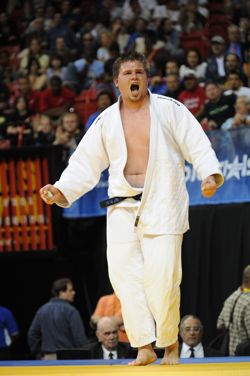
Daniel McCormick at the US Olympic Judo Trials, photo by Lou Disgesare
Stephan: Hi everybody, Stephan Kesting here. Today, I’ve got a special guest on the podcast: Daniel McCormick. Daniel is a 2008 Judo Olympian and the 2009 US National Judo Champion. He’s unusual in the sense that he’s a high level Judo player but he’s also got a lot of experience in the Brazilian Jiu-jitsu world. So, I thought it would be really interesting to talk to him as a hybrid athlete.
Why don’t you tell us a little bit about you and your background in Judo and Brazilian Jiu-jitsu?
Daniel: Well, I started Judo when I was about 10. I did a little bit as a kid, and then unfortunately, like a lot of kids, especially in America, I got sidetracked with other sports, so I quit when I was 11 or 12. When I was 14, almost 15, I came back to Judo and have been doing it ever since. I kind of got hooked on it, and like a lot of people, became a nerd for the sport.
In late 2006, I moved up to Boston to train with Jimmy Pedro, with Team Force, and I was there up until last October. I moved back home to Texas and I’ve been training out here ever since.
Stephan: What was the initial attraction to Judo? Why Judo and not – say – football? And then, after you left, why did you come back to Judo?
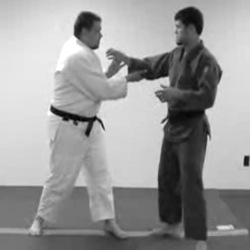 Daniel: Well, initially, when I was a little-bitty kid, I was too big to play a lot of the sports. I couldn’t play football, so my Dad was talking to somebody he worked with and they said, ‘Hey, I’ve heard about this sport, Judo. A lot of kids love it. If you want, you could take Daniel there.’ We went and talked to Ace Sukigara, who was my original sensei. I got on the mat and liked it as a kid, but got little out of it.
Daniel: Well, initially, when I was a little-bitty kid, I was too big to play a lot of the sports. I couldn’t play football, so my Dad was talking to somebody he worked with and they said, ‘Hey, I’ve heard about this sport, Judo. A lot of kids love it. If you want, you could take Daniel there.’ We went and talked to Ace Sukigara, who was my original sensei. I got on the mat and liked it as a kid, but got little out of it.
In 7th grade I got into football, got distracted and I quit Judo. When I was 14 I went back to Judo, more than anything to complement football,. Probably when I was about 16, 17, Judo got even with football and it eventually passed football.
Stephan: What led you to moving from being a recreational Judo player to a competitive Judo player, and eventually down the road to being a Nationals champion and then getting to the Olympics, which is a huge deal… All this is a pretty serious commitment: it goes way beyond just liking a sport…
Daniel: I’m kind of childishly competitive about things. When I started Judo back at age 14, I lost a ton. I don’t think I won a match in my first 10 tournaments; it was bad. I kind of got irritated and kept pushing and pushing. I studied online and things started clicking.
Then in my senior year of high school, I went to Nationals and won a match. One of my coaches and I decided in my freshman year of college to really push in Judo. And I took silver in Nationals that year. That was 2005. At that point, I kind of realized there was a chance I could do decent, that I could do well.
I hooked up with Jimmy Pedro in early 2006. He was just starting Team Force and talked me into coming and training there…
Stephan: For those people who don’t know who Jimmy Pedro is, can you give them a quick introduction?
Daniel: Jimmy Pedro is a a 4-time Olympian, in 1992, 1996, 2000, and 2004, and 2-time Olympic bronze medalist in 1996 and 2004. He was World Champion in 1998, and arguably the best North American Judoka ever. I know Nicholas Gill will give him a run for his money, but Jimmy is still one of the best Judokas to come out of North America. He’s also the Olympic coach for London 2012.
Stephan: So how many favorite throws do you have? Judo’s a predominantly throwing art and you always hear that Judo players really only have 2 or 3 good throws. Is this also this true in your case? And if it is true, which throws are they and can you describe them briefly?
Daniel: Well, it is true and it is true in most sports. You can’t chase every single area of the sport. You have to focus on a certain part of the sport and make yourself as good as you can with those.
But you have to be versed in the other areas of the sport as well. For instance, with Jiu-jitsu, you can’t go out and only learn how to pass the guard because you’re not going to be on top the whole time. You might also have to use your guard, and if you don’t have at least some knowledge of the guard, you’re going to look pretty silly.
So, for me, as a bigger guy, my main throws were O Soto Gari, which literally means outside major reaping. It’s basically a leg trip when I step outside the opponent and kick their legs out with mine. Then there is also Harai Goshi, which is the hip toss, where I lift their legs up with mine. And then, Sasae Tsurikomi Ashi which is a foot trip.
Those are my 3 basic techniques, but I had a few others that I could call onto whenever I needed them. For instance, Sumi Gaeshi is something that later in my career, once I matured physically and especially mentally, I was able to be smart with it and use it. I got a lot of big throws out of it.
Stephan: What about on the ground? I know you have cross-trained in BJJ… What are your favorite Judo newaza techniques? Newaza, for people who don’t know, is Judo groundwork.
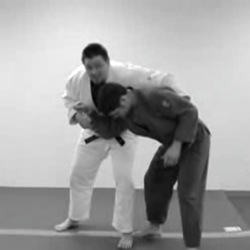 Daniel: For me, I’m always about pins, especially for Judo. The way the Judo ground game works, is once you hit the ground, you have to show progression. If you don’t – and the ref is being generous – you might only get 10 to 15 seconds before he stands you up. If you show progression, on the other hand, then they’ll let it go for as long as you’re still showing progression or as long as the match goes.
Daniel: For me, I’m always about pins, especially for Judo. The way the Judo ground game works, is once you hit the ground, you have to show progression. If you don’t – and the ref is being generous – you might only get 10 to 15 seconds before he stands you up. If you show progression, on the other hand, then they’ll let it go for as long as you’re still showing progression or as long as the match goes.
For me, because I fight heavyweight where there are a lot of really strong guys, it’s tough to get an armbar or a choke in 12 seconds or 15 seconds, so I try to focus more on pinning them.
When I moved to Pedro’s, I had very, very little ground game. And then I definitely got better. Jimmy is known for his ground game in the Judo world. But I was definitely missing something.
A buddy of mine, he took me to BTT, Brazilian Top Team, in Boston and there’s a little guy there and he just made me look silly. And again, my childishly competitive side comes out whenever I start losing, so I started studying a little bit more and I started rolling with them a little bit more. Then I started picking up little things, and without a doubt, my ground game has gotten a ton better. I’m still not quite as great with the submissions, but in Judo it’s helped my ground game tenfold.
Stephan: It’s interesting to hear you say that, Daniel, because I think that most Jiu-jitsu people will acknowledge that Judo can bring something to BJJ; unless you’re solely into pulling guard, it’s good to be able to throw your opponent on his head.
But I find that the reverse isn’t often true. I run into an awful lot of Judo people who’ve got absolutely no interest in the BJJ technology. It’s kind of a snobbery: “we’re an Olympic sport, you guys are a bunch of upstarts.” Is that just my perception or do you think there is some snobbery in some Judo circles?
Daniel: I think you’re definitely right. I think a lot of people feel that way. You know it’s not hard to stay defensive on the ground for 15 seconds and that’s the way a lot of people look at it. If they sit there and they get as defensive as they can for 15 seconds, match is over. Why bother with any groundwork?
I look at it as being 15 seconds where I can use the ground to try and wear my opponent out,! 15 seconds where I can maybe open something up and win the match. I think that they help each other greatly both ways.
Stephan: Okay. Who else have you trained with in Brazilian Jiu-jitsu? You’ve trained with Brazilian Top Team in Boston…
Daniel: I’ve been to New York City. One of my big sponsors is the New York Athletic Club in New York, so we’re down there quite often for conventions or whatever. And recently, about 1½ to 2 years ago, Marcelo Garcia moved back to New York. So whenever I’m in town there, I roll with him and I feel very silly.
Here, in Texas, I’ve been working out at Travis Lutter’s place. I’ve also worked out with Carlos Machado and with Bruno Bassos a couple of times.
Stephan: Okay. I’ve been a tourist in and out of the Judo world myself, and roughly, when I started getting out of Judo and concentrating much more heavily on Brazilian Jiu-jitsu, Judo was basically going through a seizure of rule changes. Only allowing certain grips and apparently, recently, there are no more leg grips at all.
Does that make Judo less applicable to Brazilian Jiu-jitsu and grappling? Where do you stand on the rule changes over the last 10 years?
Daniel: Because Judo is an Olympic sport, one of the side effects is the rules are set for every quad (the four year cycle between Olympic events). So after every 4 years, they want to change stuff up a little bit.
Not many of the athletes absolutely love these rule changes, because we finally get set in something and then it changes, but the rules are just part of the sport. Every sport has to evolve, especially if it’s going to grow. So, it’s irritating maybe for the first 6 months, but once you figure it out then it kind of settles down.
Very few rules on the ground will ever change and, as far as I know, in this last quad, they hadn’t changed any rules on the ground.
Stephan: Can you take us a little bit through the Olympic experience? What was training for that like and what was actually being there like?
Daniel: The training was rough! It was worth it but I was on the mat 3 to 4 hours a day, plus in the weight room, plus on the track. It all adds up but without a doubt it was worth it. The way the system works we (the US team) had our Olympic Trials in June and then the Olympics were in August.
Stephan: That’s not a lot of time..
Daniel: A lot of us were training for the Olympic Trials. After the Trials, I went home for 2 days to see my parents and my family, then I got back on a plane and headed up to Boston. I had very little time off.
Then we left for Spain first weekend of July for 2 weeks. We came back and we were off to China. China – it’s tough to describe in words – but it was, without a doubt, the proudest moment of my life walking in the opening ceremonies with Team USA. And from what I understand, it was the proudest moment of my parents’ life too, so that makes it pretty special.
It was a great time fighting for my country. I took 9th. I’m a little sad about that. It would have been nice to sneak in there and grab a medal, but it was exciting, to say the least. I have a smile and goosebumps right now thinking about it!
Stephan: Were you nervous? And are you nervous in general when you compete?
Daniel: I was more nervous when I was younger. As I got older, I kind of settled down. Everyone has nerves. I think that’s the important part of competing.
But after my first fight, my forearms were locking up, my legs were locking up, I was shaking and our physical trainer was rubbing my hands out… So the first fight was pretty rough. After that, I settled down and it kind of all blurred out from there. I don’t really remember much of it. I guess the adrenaline took over.
Stephan: Now in the run up for the Trials or for the Olympics themselves, can you give us a sense of when your hardest period of training was? And what, exactly, were you doing on a really hard day of training?
Daniel: I’d wake up about 7:00, sometimes 7:30, and then depending on the day, because I’m a heavyweight I would usually focus more on lifting. I would go and hit the gym for at least an hour, usually 1½ hours to 2 hours. Then I would eat; I had to keep my weight up.
So after working out, we’d hop on the mat for 2 hours. It was usually technical stuff in the morning, but as we got closer to the Olympics or the Trials, it was more live sparring.
Then, depending on the day, sometimes we’d hit the track (for cardio) and other times we would actually have the afternoon off, but unfortunately, it was not very often.
And then that night, we’d be on the mat again for 1½ hours to 2 hours. In hindsight, it doesn’t seem that bad to me. But I’d be getting my backside whooped, just exhausted… It all paid off, though.
Stephan: So there’d be days when you were walking around in a daze, stumbling from practice to practice…
Daniel: It’s a full time job. We have more breaks in the middle, but we’re ‘at the office’ for at least 8 hours a day.
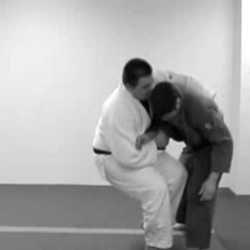 Stephan: I’d like to pick out a few specific points and go into them a bit more. When you say ‘lifting,’ could you be more specific? Were you powerlifting or Olympic lifting? Were you going heavy, were you training explosively, were you using high reps or low reps?
Stephan: I’d like to pick out a few specific points and go into them a bit more. When you say ‘lifting,’ could you be more specific? Were you powerlifting or Olympic lifting? Were you going heavy, were you training explosively, were you using high reps or low reps?
Daniel: All of the above for me. Usually, when tournaments come, I’ll do less heavy lifting. But when I have more time between tournaments, say 2 months or so, then I’ll have more of a heavy lifting program because I want to focus more on strength: I don’t want to lose my strength. So when I’m doing the heavy lifting, it’s higher weight, fewer reps.
Then as the tournament comes, I want my cardio to go up, and that means running and a lot of other things. So then I do a lot of Olympic lifts, ladder drills, hurdle drills, spend some rate for that.
So, my goal is “strength when I can,” but I always want to make sure that my cardio is in the best shape.
Stephan: So let’s say that you’ve got a tournament 3 weeks from now. What, specifically, would you be doing for your sprint work? How long are you running, how long do you rest between sprints…
Daniel: Well, usually, for my sprints, I’ll do 50’s and 100’s. I try to do twelve 50 meter sprints and eight 100 meter sprints. And occasionally, I’ll throw in a 200 meter or a 400 meter sprint too. I don’t really time my sprints, but I try to push it a little bit.
I’m doing this at least twice a week before tournament.
Stephan: I know it’s a tough question, but technique is built on the foundation of not being tired. So if you had to break it down, what percentage of your success in Judo has been from technique versus from conditioning? Or, another way of wording the same question: ‘how important is conditioning to high level performance.’
Daniel: If 2 people are technically the same, then the best conditioned and the strongest is going to win. Whereas if someone is really strong and in really good shape, but they fight someone who’s got much better technique, then they’ve got no chance. So, technique is very important.
Occasionally, you’ll see someone who is technically better lose to an opponent who is technically a little bit worse. But in that case the person had better cardio and was able to tire the other person out. So, it plays both ways. It’s tough to say that one is better than the other.
On the technical side I definitely learned a lot when I moved to Jimmy Pedro’s. I learned a lot of positioning. I learned a lot more throws. I learned a lot more angles. Judo became 3-dimensional. I was able to figure out different angles and I stopped thinking just straight forward and backwards, left and right.
But, unfortunately, the perfect technician doesn’t always win, so I had to make sure I focused on strength. And really, for me, I became a man in Boston. And I’m not saying Judo-wise: I just physically matured in Boston. I went from being 19 years old to 24 when I left: that was a big strength change period and I did a lot more lifting. I kind of grew into my body…
Stephan: So just so some people can compare themselves to an Olympian, how big are you? How strong are you? Can you give me an example of the lifts that you’re pulling off, and how fast are you when you’re sprinting 100 meters?
Daniel: I’m 6’5”. About 322 lbs right now, little heavy, I like to compete at about 310 to 312lbs. I’m not really sure how fast I run the sprints: I’m not the fastest person in the world. For me, maxing out on my deadlift would probably be 600 pounds, and then for the benchpress, I’m in the low to middle 400’s maybe. And I actually don’t know what my squat is.
Stephan: That’s a lot of weight! Do you run into a lot of people who are stronger than you when you’re at a high-level competition?
Daniel: I do. It’s kind of funny but I think anyone who’s been on the mat, can understand that weight room strength does not always transfer to mat strength.
You can have someone that’s really strong, and even if they do know techniques, they don’t feel as strong on the mat as they could. I can maybe be stronger in the weight room than some people, but on the mat, they’re going to feel stronger. I’ve definitely run into people that felt stronger than me (laughing).
Stephan: Let’s switch gears and talk about BJJ… So, first of all, do you have any interest in competing in Brazilian Jiu-jitsu or submission grappling?
Daniel: Eventually, I’d love to, I’ve kind of fallen in love with it. Apparently, I’m becoming kind of a grappling geek. At first, I was all about Judo, and, like a lot of people, I thought Judo was the best, nothing can beat Judo…
But as I grew I realized there’s a bunch of people in Jiu-jitsu that are kicking my backside. I’m kind of falling in love with it. So eventually, yes, I’d love to. It would be great to fight in the ADCC, and the BJJ The Mundials would be awesome. It’s a lot of fun, and hopefully I can compete at the level I’d like to compete at.
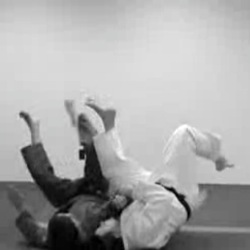 Stephan: Okay. Well, this takes us to takedowns in Brazilian Jiu-jitsu competition. If, in Judo, if I was to come out and tie up with you, bent over at the waist with my arms straight, stiff-arming you away, not only would you throw me on my head but I would also start accumulating penalty after penalty for inappropriately defensive posture.
Stephan: Okay. Well, this takes us to takedowns in Brazilian Jiu-jitsu competition. If, in Judo, if I was to come out and tie up with you, bent over at the waist with my arms straight, stiff-arming you away, not only would you throw me on my head but I would also start accumulating penalty after penalty for inappropriately defensive posture.
But in Brazilian Jiu-jitsu, there’s no such rules about posture… So then what are a couple of good strategies and good throws to defeat this type of defensive posture you see so often in BJJ?
Daniel: One of the throws I found that Jiu-jitsu guys like the most is called Sumi Gaeshi. This is a sacrifice throw from Judo. You basically pull your opponent to you, roll onto your back, lift them up with one leg and throw them over top of you. In Judo, because it’s a sacrifice throw, you’re putting yourself in a position that may end poorly. But Jiu-jitsu people, I found, love that position. If they miss the actual throw they end up in guard and are fine with that.
So many people just go up and pull guard right off the bat. But instead, with Sumi Gaeshi, they can try to throw. If it works out, they have 2 points. If not, they’re comfortable in guard.
It can drive me nuts watching BJJ standup, just like I’m sure it drives the Jiu-jitsu people watching Judo matches. I see openings, and I’m like, “Oh man, that’d be great.” They could use O Soto Gari right here, or Sumi Gaeshi. Throws aren’t thought of as much in Jiu-jitsu because you can’t win standing. The immediate wins come on the mat. Whenever people ask me, I point out Sumi Gaeshi first.
Secondly, I always tell them to use their hands. You have to get a grip because the gi is an equalizer. The fast person slows down when you have your hands on them. The stronger person feels weaker when you have hands on them. You can change their position, you control where they’re going, you can feel with their movement…
Stephan: So you’re saying that grip fighting is as important in Brazilian Jiu-jitsu, just as it has become super important in Judo…
Daniel: Absolutely! Travis Lutter told me something awesome about 4 weeks ago. He said that the grip fighting on the ground is the same as the grip fighting standing – there’s almost no difference. On your feet sometimes the movements might be a little different, but the main idea is the same. You want to control your opponent and you want yourself in a position with your hands so that you can be effective on the mat.
It sounds silly, but it was like a light bulb went off. It makes so much sense. Standing Judo is the exact same way. I see so many people that bend over and have their hands by their shoulders or by their head, not trying to reach out and grab the gi.
The very first thing you want to do is want to make sure you’re not too upright or leaning back because someone’s going to do a single leg takedown on you and take you down. Then you want to reach out, you want to grab hold of their gi…
If nothing else, now with the grip you have a little bit of control, a little bit of feel and you have some time to react if they do something. One of the biggest things I try and teach people is just the standard Judo grip so that they can get the feel. It’s the start of most of the throws in Judo. If they get comfortable with that grip, then they can start doing the throws a little easier.
Yoko Sumi Gaeshi by Daniel McCormick
Stephan’s note: this throw is covered in detail by Daniel in his online takedowns course which an excellent value
Stephan: So we’ve just taken a look at some of the Judo tactics and strategies that work well for Brazilian Jiu-jitsu. What about some of the classic Judo throws, like Seoi Nage, the shoulder throw, where you turn your back to your opponent? That works really well in Judo competition – it’s a bread and butter throw – but wouldn’t that throw be suicide in a Brazilian Jiu-jitsu, submission grappling or MMA context?
Daniel: It definitely can be if not practiced! A lot of the techniques take commitment. Just like techniques on the mat, it takes commitment to get them. If someone doesn’t practice a move, it’s going to be tough to get it. This is very important, and I try to stress this to everyone!
You shouldn’t just look at throwing techniques on YouTube or on a DVD or read about it in a book and think that you’re going to add it into your game and throw someone at a tournament the next weekend to win the whole tournament… It could happen, but not very often. It takes a lot of practice and a lot of time.
And it takes 100% commitment for many throws: I think that’s one of the biggest things that people don’t always see when they watch Judo. For a lot of the throws you’re actually throwing yourself. When I’m halfway through a throw my thought might be that be my chest is going to hit the ground and then I pull my opponent between me and the ground. Sometimes, especially with beginners, it’s tough for people to get used to that commitment and then it’s tough to get the confidence to use that throw.
So, if someone doesn’t practice a throw isn’t practiced and doesn’t really commit themselves to the throw, it’s going to be tough to get it. You can end up in a lot of bad positions. But in BJJ it’s the same thing: you can’t go for a sweep with 20% of your body and expect to get every time. You might get it once in a while, but to make sure the sweep consistently happens, you have to really put 100% into it!
Stephan: That’s a great point. It seems that people are holding the Judo to a higher standard than Jiu-jitsu. Because if you go into a butterfly guard sweep half ass then your opponent will probably pass your guard and pin you. But nobody’s saying “don’t go do the butterfly sweep…”
Daniel: Absolutely.
Stephan: Okay. So I believe you just finished shooting a series of DVDs. Is that right?
Daniel: Yes, Sir. It’s a 4-DVD set. It focuses on mostly standing Judo techniques that you can apply in a BJJ or grappling match. The first 2 DVDs are gi-based takedown: I teach and break down some of my favorite techniques, as well as other techniques that are most applicable to gi-based BJJ tournaments.
Stephan: Does your Judo for BJJ DVD set deal with the ‘standard BJJ defensive posture’ we were talking about earlier?
Daniel: Absolutely. One of my main focuses in those DVDs is how you can get into throws if someone bends over a little bit, keeps their hips away from you and is being defensive.
The third DVD in the set is focused on Judo takedowns without a gi. Most people think that Judo takedowns are only with the gi. But it’s very possible to change the technique a little bit, mostly just the grips, and that makes the techniques very, very useful without the gi.
You see a lot of MMA fighters using Judo throws. One of my former teammates and roommates, Rick Hawn who has just signed with Bellator, uses standing Seoi Nage, foot sweeps, and O Soto Gari in MMA.
Almost all the techniques can be used easily in no-gi, just with a few modifications , mostly where the hand go and how you grab.
The final DVD in the set is about Judo ground fighting for Jiu-jitsu. There’s a difference between Judo and Jiu-jitsu ground game. Because of the time factor and the way Judo is scored, the turtle guard is very common in Judo. If you just sit there for 10 to 15 seconds, the ref stands you up back up on your feet…
Stephan: But that makes some Judo guys pretty good at attacking the turtle…
Daniel: Yes, Sir. It’s what we’re most used to. It’s when you get us on our backs and in our guard, we look silly and feel dumb.
So, most of the techniques that I discus in the last DVD focus on attacking the turtle. For instance, there’s a great way to get a triangle against someone’s turtle that you rarely see in Jiu-jitsu tournaments. And the reason why it’s popular in Judo is because it’s a little more explosive and it’s quicker. The percentage of getting it is going to be lower than in a Jiu-jitsu tournament, where you can take your time. But it’s still a great technique that I’ve used, and seen other people use, in a BJJ setting.
Stephan: Are you talking about Yoko Sangaku, the side triangle choke?
Daniel: Yes, Sir.
Stephan: Yeah, worst case scenario, if it doesn’t work then you often end up on top in a half-decent pinning position that you can convert to a more “standard” submission or Jiu-jitsu strategy if the whole attack only works partially.
Daniel: Absolutely. Definitely.
Stephan: Okay. So let’s say that some guy out there decides that he’s going to become an expert at Harai Goshi, or Uchi Mata, or whatever and apply it to Brazilian Jiu-jitsu…
How does he go about training? Obviously, he needs some instruction, which he can get either from your DVDs, or by joining a Judo club or, God help him, from YouTube clips or whatever.
But once you’ve gotten a basic understanding of the technique, what are the steps to actually train it so that you can really use it in competition?
Daniel: There are 3 step to a throw, 1) off-balancing, 2) entering and 3) finishing.
In Judo, “Uchikomi” ( ‘fitting in’) takes care of the first two steps. You want to do tons of repetition of opening your opponent up, fitting your body in and lifting them up.
The next part is extremely important, and it can sometimes be a little bit difficult: you have to find a willing partner (laughing). And you basically have to throw them – sometimes people aren’t willing to let you do that – but it’s important to throw someone with the techniques you plan on using so that you understand your body position and what it feels like.
For Uchikomi, the fit in, you need to do hundreds upon thousands of repetitions to get used to it. And when I say that, a lot of people are like, “wow, that’s a tough one!” But when you think about it, you do the same thing in BJJ everyday. When you train techniques, you might do a choke many different times, you do an armbar many different times. It’s the same thing. It’s just that you’re standing for these techniques.
And then for me, it was in the ‘live’ situations when I started really learning and understanding the techniques. So here I’m sparring with someone who’s trying to take me down and I’m trying to take them down. If you have someone just standing there and they’re not resisting, then when you throw them their body is static. There’s no movement. You’re not going to feel how a person feels: a person isn’t a stiff board all the time. Instead a real person is moving, bending, pushing away a little bit. So you want to go with someone who’s willing to go with you, so you can feel where people move and you can learn to fit in.
Stephan: Does that mean sparring at 100%?
Daniel: The intelligent answer is no because you don’t want to hurt people (laughing). But unfortunately, people have egos – everyone has an ego – and they hate to lose. So, one person gets thrown, they get up, and then they want to do it harder…
So I would say, no, not 100%. You don’t want to try and put your partner through the floor because your partner’s not going to like you. But it does happen. You just have to be kind of friendly with it. I’ve seen a lot of people go at it real hard on the mat, start banging heads and get a little intense, and then they go off the mat and they’re buddies again. So I would say you don’t have to go 100% as hard as you can every time, but it’s inevitable that it’s going to happen. When it does happen, just be smart about it. You don’t want to start a fight and ruin a friendship over it.
Stephan: Well, can you talk about some other ways to reduce the odds of injury when you’re training throwing, which is inherently a little bit more risky than training on the ground, I think?
Daniel: Again, in Judo, the Japanese term is “Ukemi,” and it basically means breakfalling. You learn to protect yourself when you fall on the ground. It’s important to know how to fall. You don’t want to throw someone who’s going to freak out when they get up there, twist and turn, land on their head, get injured and go to the hospital. I’ve seen it happen and it’s scary.
You want to make sure that the person knows how to fall, to protect themselves. And when you’re throwing, you want to make sure you control them in the air. You’re not picking them up, flinging them into the air and letting go. One thing I show on the DVDs is that I keep my demonstration partner Aaron safe. In most of the techniques I hold his sleeve so he lands safely.
And there’s also the breakfalling, which Aaron is very good at at and he makes me look very good in the DVD: whenever he lands his hand slaps the mat. This idea sounded silly to me when I first heard it, but when a person slaps the ground it seems to absorb the impact and the throw doesn’t hurt. It teaches you to control your body and how to fall. So that is very important.
When you’re training you don’t want to take someone who has no idea what they’re doing, pick them up and throw them down as hard as you can!
Stephan: Okay, so you’re saying to work with a bit of control, and also learn how to fall before you go crazy with your standing Judo work.
Thanks for this glimpse into the world of Judo, and also into the cross-pollination that’s possible between Judo and Jiu-jitsu. There’s been a lot of cross-over between wrestling and MMA. And there has already been some Judo influence on MMA, like with your roommate Rick Hawn, or Karo Parisyan in the UFC. Also lots of fighters in Japan have a Judo background, so this mixing of arts is a really interesting area.
Best of luck in your Judo career, Dan! And I hope to see you out there with a medal around your neck in London in 2012.
Daniel: Awesome. Thank you very much.
The post Podcast EP6: Judo and BJJ: How They Help Each Other appeared first on Grapplearts.

